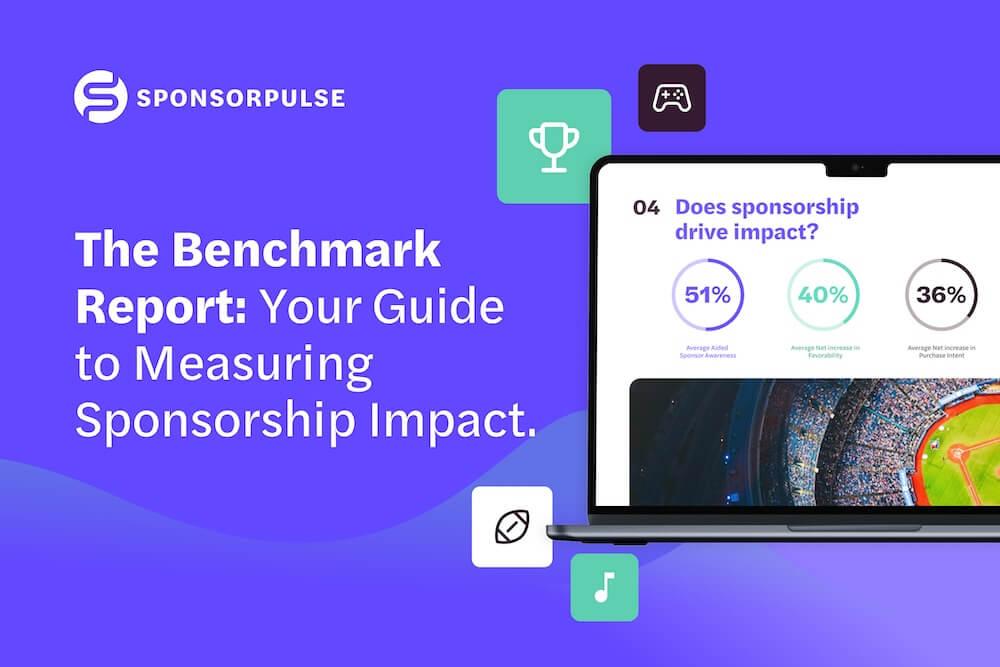Your Guide to Benchmarking Sponsorship Impact

Sponsorship marketing has seen a resurgence in recent years, with brands across industries pouring significant resources into partnerships with sports teams, musicians, and entertainment properties. But with industry spending soaring, a crucial question remains: is it working? While the initial answer might seem like a resounding yes (i.e., record-breaking deals and growing brand confidence), challenges still exist, particularly when measuring the true impact of sponsorships. This article will walk you through the fundamentals of sponsorship marketing, its core elements, effectiveness, and the importance of data-driven insights for success.
Understanding Sponsorship Marketing
Sponsorship marketing involves a brand providing financial or in-kind support to an event, organization, or property in exchange for promotional opportunities.
The collaboration between the sponsor and sponsee aims to extend the visibility, brand association, and access to the sponsee's audience.
The Power of Sponsorships
At its core, sponsorship marketing offers several potential benefits for brands, including:
Increased brand awareness and reach: Sponsors gain exposure to a large and engaged audience through the sponsored property's channels and events.
Enhanced brand image and association: Aligning with a popular team, event, or personality can positively influence consumers' perception of your brand.
Driving purchase intent and sales: Effective sponsorships can ultimately lead to increased sales by fostering positive brand sentiment and purchase intent.
However, measuring the impact and return on investment (ROI) of sponsorship marketing has been a persistent challenge for brands and brand managers specifically.
The Importance of Measurement
Many professionals agree that demonstrating value internally and measuring attribution, impact, and return on investment (ROI) are significant hurdles.
SponsorPulse's State of Sponsorship Report highlighted this issue, with 66% of professionals acknowledging that demonstrating sponsorship value internally and measuring impact are the biggest challenges.
Traditionally, companies used impressions and logo placements as key metrics, but these don't necessarily translate to impact. More robust measurement solutions are needed to guide investment decisions and optimize sponsorship strategies.
Measuring Impact and Outcomes
So, how can brands effectively assess the impact of their sponsorships? The answer lies in measuring outcomes, focusing on key metrics that go beyond mere impressions:
Brand awareness: Unaided and aided awareness, gauging if consumers recognize and associate the brand with the sponsorship.
Brand perception: Measuring changes in favorability and positive brand associations.
Purchase intent: Assessing if the sponsorship influences consumers' willingness to purchase the brand's products or services.
Through metrics such as property health, unaided awareness, aided awareness, impact on equity attributes, favorability, and purchase intent, SponsorPulse provides brands with valuable insights into the performance of their sponsorships.
The Importance of Benchmarks
Brands need benchmarks to compare their results against industry averages, competitors, and top-performing sponsorships — this is where data-driven insights become crucial.
Average sponsor awareness: How many engaged consumers recognize the sponsoring brand?
Impact on brand favorability: The average increase in positive brand perception among aware consumers.
Purchase intent: The average increase in purchase intent among aware consumers.
As an example, the report features the "spread" in results, showcasing the variability in sponsorship performance:
This highlights the importance of strategic activation, creativity, and investment in maximizing sponsorship impact.
The Bottom Line
Sponsorship marketing holds immense potential, but its success hinges on measuring and optimizing its impact.
The data suggests that, on average, brands can achieve sponsor awareness among half of engaged consumers, leading to significant increases in brand favorability and purchase intent.
However, the variability in results highlights the importance of effective activation and creativity in sponsorship strategies.
Dive Deeper
Access the SponsorPulse Benchmark Report guide to explore industry benchmarks, learn how top brands maximize returns and gain valuable insights to optimize your sponsorship strategy.


